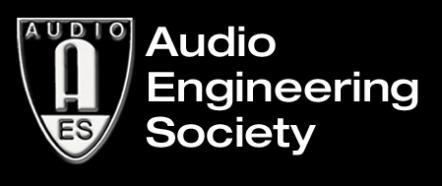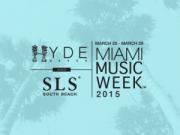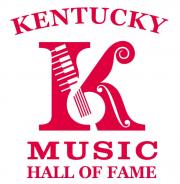New York, NY (Top40 Charts) The Audio Engineering Society hosted its 57th International Conference, titled "The
Future of Audio Entertainment Technology: Cinema, Television, and the Internet," in Hollywood, California, on Friday, March 6, through Sunday, March 8, 2015. Co-chaired by Brian McCarty and Dr. Sean Olive, the conference was intended to stimulate increased dialog between the Hollywood content creation community and the AES, and drew a substantial audience to the three-day program, which was presented at the TCL Chinese 6 Theatres. Keynote addresses were given by noted industry professionals, including Dr. Floyd Toole, former AES President, Fellow, and Gold Medal recipient; Louis Hernandez Jr., Avid Chairman, President, and Chief Executive Officer; and Francis Rumsey, Chair of the AES Technical Council, Fellow, and Bronze Medal Award recipient.
"The genesis of this conference came from the AES's realization that the largest group of working sound engineers is those that do sound for picture in some way. Over the last few conventions we've been addressing workshops and seminars directly to that group of people," said McCarty, who is the chair of the AES Technical Committee for
Digital Cinema and Television. "What I'd like to see come out of this are some action items about what the Hollywood community thinks the various organizations need to do to start meeting their needs."
Featuring the AES's first-ever Immersive Audio Day, chaired by Dr. Francis Rumsey, the conference also presented paper sessions, workshops and panels on such topics as cinema acoustics, cinema B-chain measurement and calibration, low frequency reproduction challenges, loudness and noise-induced hearing impairment, dialog intelligibility, equalization and dynamics processing, and content personalization. Presenters also highlighted the pressing need to address the issues of next-generation streaming services and headphone delivery of the established and emerging immersive formats.
The leading immersive formats, several of which are vying for adoption in the ATSC 3.0 next-generation television audio standard, were discussed in great detail over the weekend. Workshops, paper sessions and panels offered in-depth technical details of well-established formats such as ambisonics and binaural sound, Auro-3D's channel-based scheme, object-based systems from Dolby Labs and DTS, and the hybrid MPEG-H standard.
A presentation by Frank Melchior, lead technologist with BBC Research & Development in the U.K., included the BBC's "Responsive Radio" internet-based experiments with binaural sound delivered to headphones and also demonstrated that object-based audio can be used for content personalization, not just for generating an immersive experience. "I think we're a little behind the curve on that," observed McCarty. "Maybe this will serve to stimulate more interest in starting to deliver those kinds of services to the consumer."
He continued, "We've seen many different techniques for developing and delivering these immersive standards and other audio formats to the headphone market. It's starting to reach viability now. We need to start putting production workflows in place to deal with them."
Going forward, there will also need to be standards put in place by the AES—as well as SMPTE, a partner in the conference—if immersive sound formats are to be able to interoperate and exchange object- and channel-based audio essence and metadata, many panelists agreed. Melchior suggested a number of practical ideas for standards, including advanced audio file formats, advanced audio streaming formats, and baseline renderers.
"These are all going to be a lot of work," said McCarty, during his final summary of the weekend's events. "We've seen that in immersive sound for cinema it's been a lot of work already. Hopefully, as we work through that process and we add distribution levels, we'll all be able to build together on the work that's been done."
While also calling for a new set of cinema audio standards that set the bar at the best that can be currently supported, McCarty added, "I think we need to be aware that streaming is the future of a lot of our distribution. We need to maintain our vigilance so that we get the same kind of attention that the picture side gets when standards are being developed for streaming."
Sponsors for the AES 57th International Conference include: Auro-3D, Avid, Dolby, dts, Harman, MPSE, NBCUniversal Studio Post, Sennheiser, and SMPTE.























